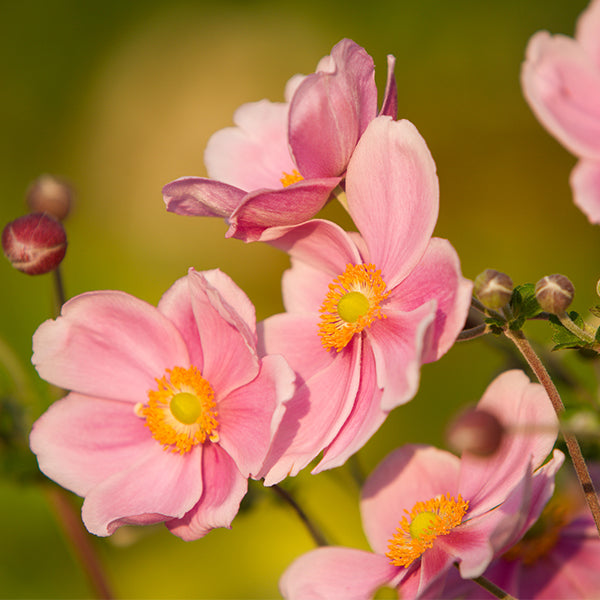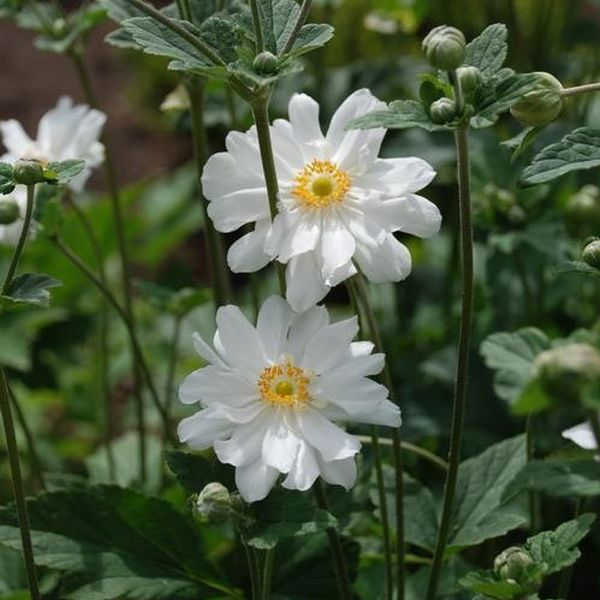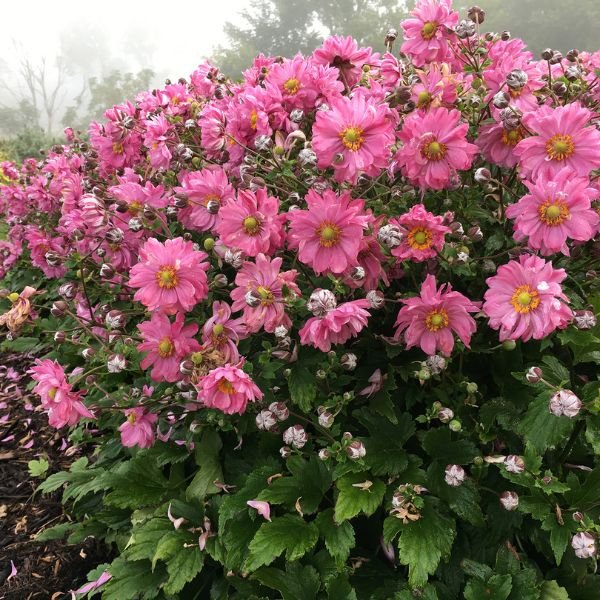How to grow Japanese anemone for striking yet low-maintenance floral displays when other plants start to wane
These perennials can spread, but don't worry, as they can also be controlled
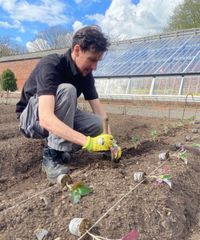
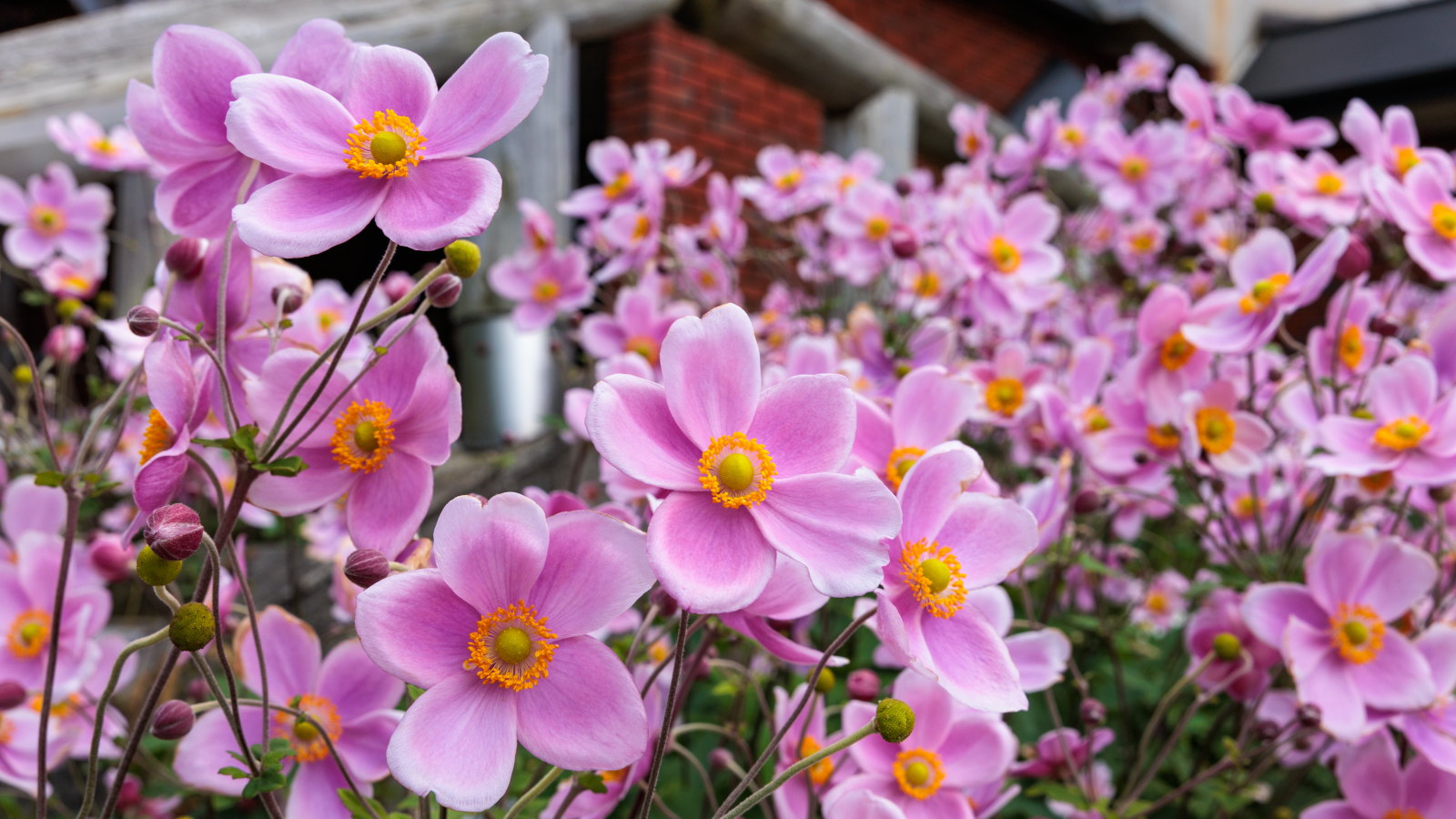
Japanese anemone bring pops of color in late summer and early fall, at a time when many other flowers have started to fade. They put on an outstanding late show of blooms, which come in shades from white to magenta, that also attracts bees and butterflies.
Also known as windflowers, Japanese anemones are perennial plants in the ranunculus family that reach 2-4 feet tall. They make graceful plants for any flower beds, thanks to their large blooms that sit atop tall stems and gently nod in the late summer breeze.
If you want to add to your backyard ideas and grow Japanese anemone, the good news is that they are adaptable perennial plants and simple to maintain. This guide on how to grow Japanese anemone includes where to plant them and the maintenance required for thriving plants.
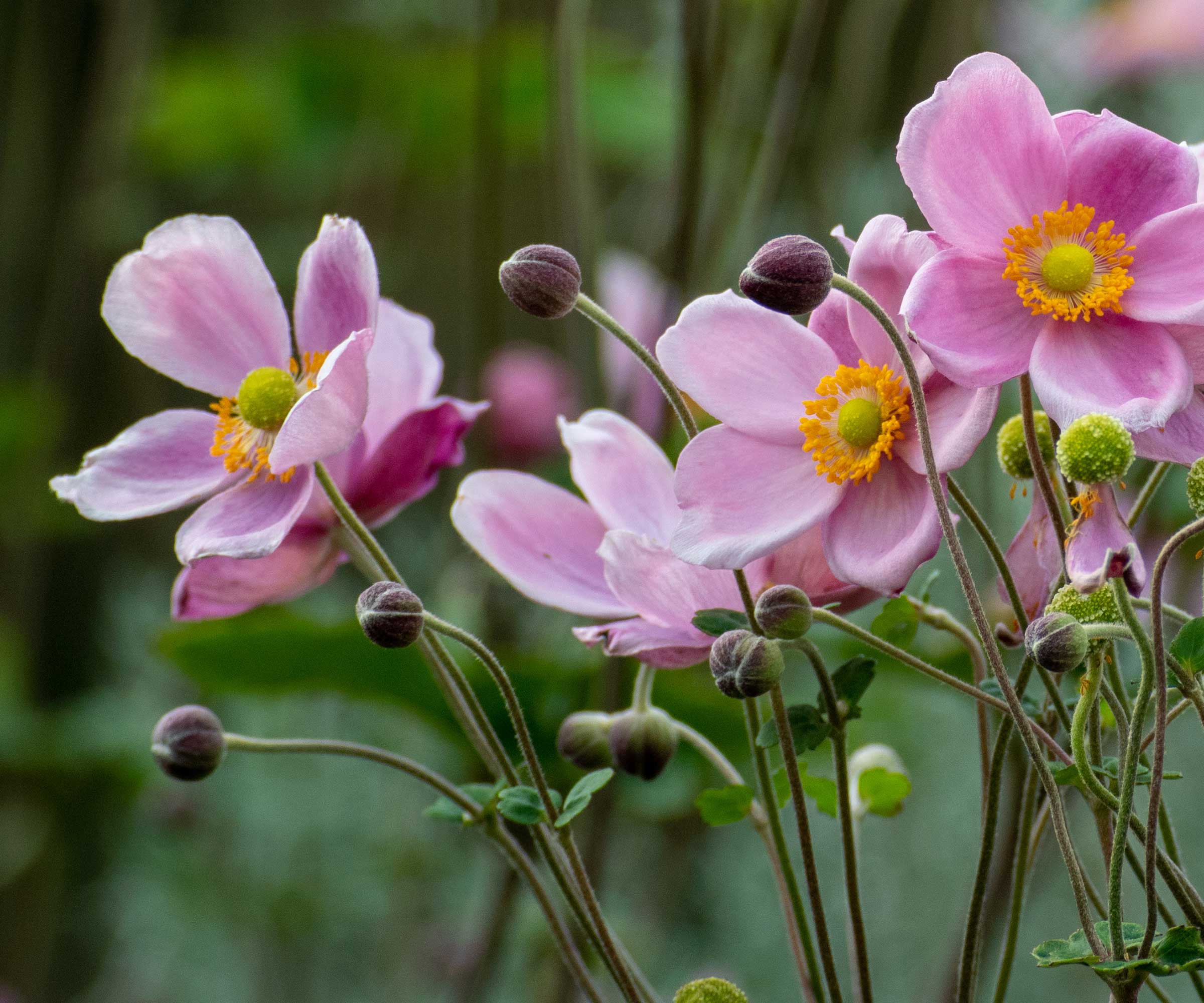
How to grow Japanese anemone – here’s all you need to know
Japanese anemone can grow in US hardiness zones 4-9 and are versatile plants that can grow in various conditions. However, Japanese anemone is toxic to people and pets. If your home has curious children, dogs, or cats, you may look elsewhere for perennials to add to your yard.
How to grow Japanese anemone - planting tips
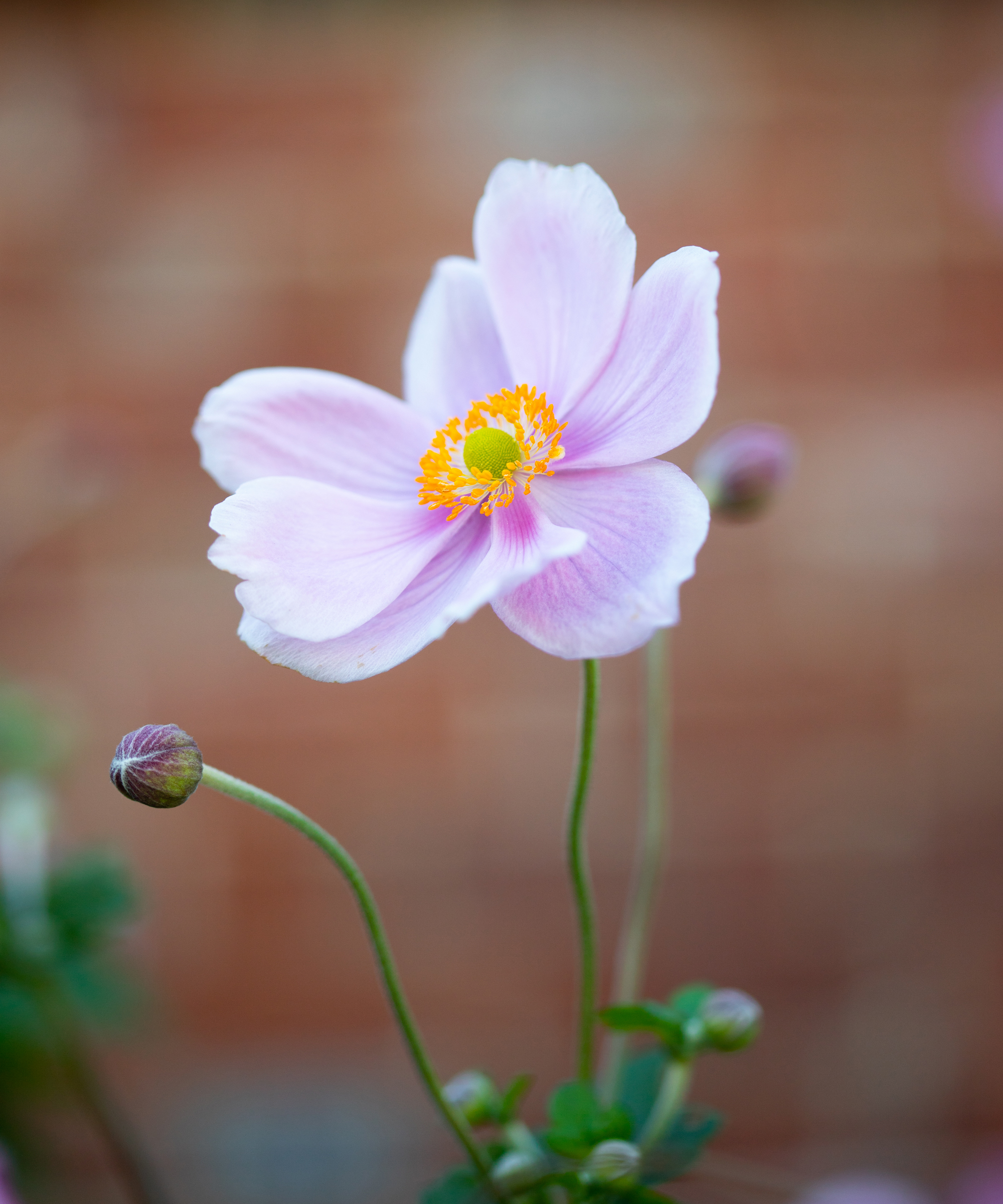
Japanese anemone plants are available for purchase from garden centres, nurseries, or online throughout the growing season and can be planted from spring to fall. Planting Japanese anemone is best done in the cooler weather of spring or fall, rather than mid-summer, when the temperature is cooler and the ground is moist.
If you have existing clumps in your garden, you can propagate Japanese anemones by dividing plants or taking plant cuttings in spring.
Japanese anemones can grow in full sun or part-shade. Avoid too much shade, though, as it can cause leggy, floppy plants with few blooms. As well as in flower beds or borders, you can grow Japanese anemones in pots as part of your container gardening ideas.
Design expertise in your inbox – from inspiring decorating ideas and beautiful celebrity homes to practical gardening advice and shopping round-ups.
'They will do best where they will receive morning sun but will have some shade to protect them from the scorching sun of the afternoon,' advises highly-experienced gardener Lucie Bradley. Their fondness for such a dappled shade location makes them great plants for under trees or for woodland garden ideas.
When it comes to soil types suitable for growing Japanese anemones, they do thrive in fertile soil that drains well.
'Before planting, I would always recommend digging compost, well-rotted manure or leaf mold into the ground,' adds Lucie. 'Any of these will help to improve the structure of the soil, not only providing a boost in nutrients but also making it more porous for improved drainage, important when planting Japanese anemones as they don’t like being in soggy, waterlogged soil.'

Encouraged to garden since she was old enough to walk, Lucie has been working in the gardening industry for over 28 years. This has meant she has been lucky enough to talk to both amateur and professional gardeners every day of the week and is always learning. She believes you can never know everything about gardening as it constantly evolves.
How to grow Japanese anemone - care tips
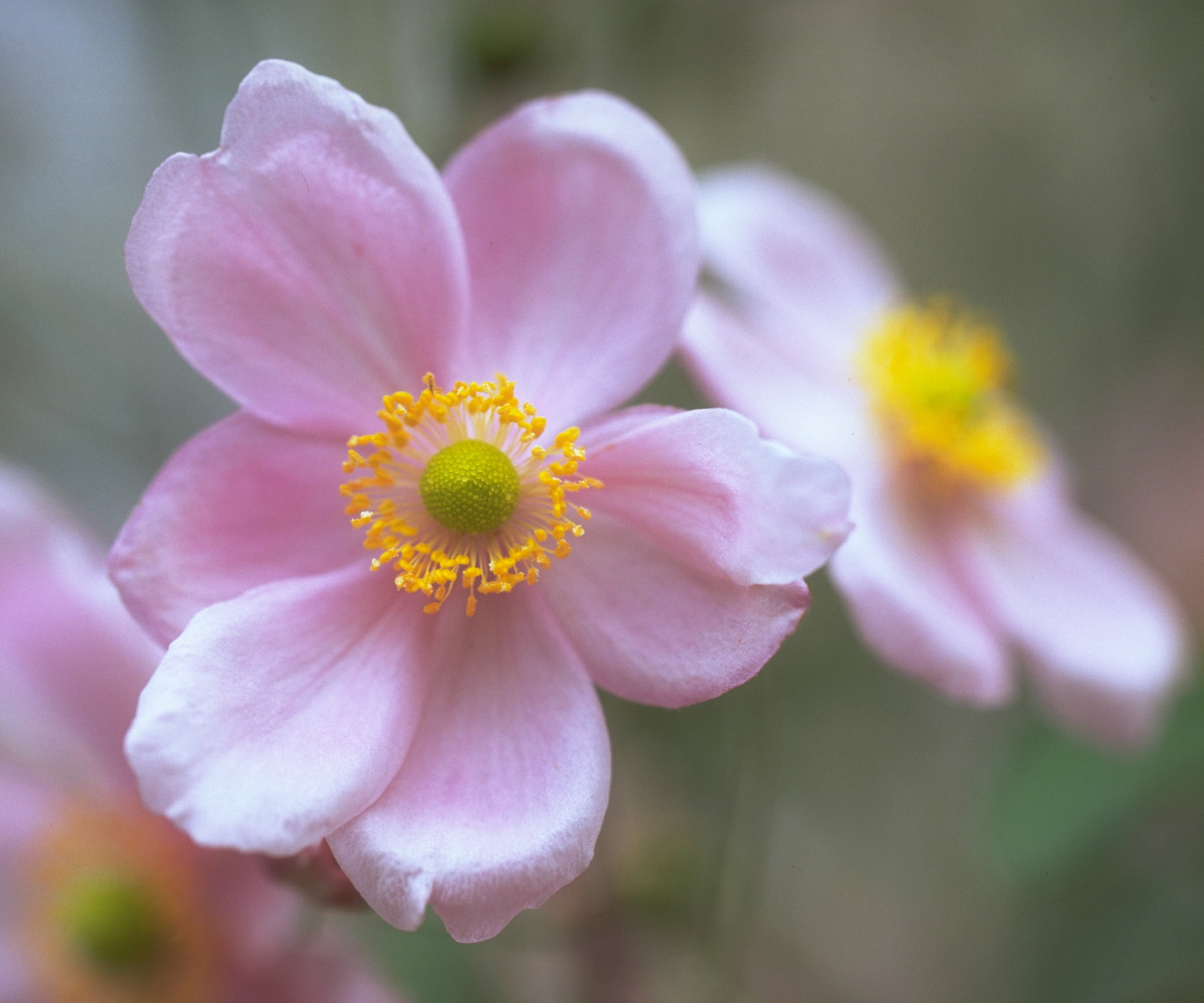
Japanese anemone care can be simple, but there are a few key maintenance tasks that you need to know about:
Watering
Watering can be a balancing act when you grow Japanese anemone, but with a bit of care and attention, your plants can thrive. When and how much you need to water depends on your climate, soil type, and seasonal conditions, but here are some key rules to remember with these perennial plants.
'The key with watering Japanese anemones is consistency and moderation,' advises Thom Rutter, an experienced gardener and content editor at Homes & Gardens. 'They are not drought-tolerant plants and dislike drying out, while they also struggle sitting in sodden soil due to overwatering, which can lead to root rot.
'The key is to keep the soil consistently moist. Check the moisture levels using a soil moisture meter and water plants deeply during prolonged periods of dry weather. Mulching around plants with compost, leaf mold, or shredded bark is a recommended way to retain moisture in the soil and protect the roots from high temperatures.'
A soil moisture meter like this one at Amazon can give instant results on an easy-to-read dial to help make decisions about watering plants.

Thomas is a Content Editor within the Gardens Team at Homes and Gardens. He has been working as a gardener and garden writer for several years. Whilst completing his Horticultural Traineeship at the Garden Museum, London, he was able to gain experience at many of the UK's world-famous gardens, including Sissinghurst, Lowther Castle, and Iford Manor. Following this, he worked for two private estates in Tuscany, Italy.
Feeding
Japanese anemones are not heavy feeders, and you may not need to fertilize plants regularly as with other flowering perennials in your borders.
'As long as you prepare the soil before planting and incorporate new organic matter each spring, they should receive sufficient nutrients from the soil to produce beautiful blooms,' says Lucie Bradley.
'If you are at all worried about the level of nutrients in your garden soil where they are growing, you could always add a slow-release fertilizer in spring or work in some bone meal.'
Any spring fertilizer for Japanese anemones should be balanced, with an NPK of 5-5-5 or 10-10-10, and applied at the recommended rates, such as this slow-release plant fertilizer available at Amazon.
Pruning
Pruning is simple when you grow Japanese anemones. Deadhead flowers during the blooming season to encourage more flowers through summer and fall, and then cut the plants back either in winter or spring.
Leaving some seedheads over winter can provide birds with a food source during the colder months, and, if you prefer to do this, cut back the plants in spring before the new growth starts.
Division
Division is the easiest way to get new clumps of Japanese anemone to plant elsewhere and get new plants for free. Divide clumps in early spring, just as the new growth emerges, or in the fall.
Dig up a clump and split it into two or three sections with a shard spade or knife. Replant the new sections immediately and water them in thoroughly.
Shop Japanese anemone varieties
FAQs
Are Japanese anemone invasive?
Japanese anemones are not officially classified as invasive plants, but they are notorious for spreading rapidly if left to their own devices.
The plants spread by sending out vigorous underground stems and also by self-seeding, which can result in plants spreading out of their intended space and taking over areas.
Dividing clumps to control their size, removing new shoots in spring, and deadheading to prevent seeds from scattering will help prevent the spread.
Can you grow Japanese anemone in pots?
You can grow Japanese anemones in pots. It is important to use a large pot with drainage holes in the bottom to prevent the plant from sitting in sodden soil, and to fill it with a well-draining potting soil for container gardening.
Place the container in a part-shade spot on a deck or patio and keep a close eye on watering so the soil remains consistently moist.
Can you grow Japanese anemone from seed?
Yes, you can grow Japanese from seed. It is a slower process than dividing plants, though, plus the germination can be erratic, and you won’t get flowers in the first year. However, it is doable.
Japanese anemone seeds need a period of cold stratification to mimic natural dormancy (which can be achieved by placing them in a refrigerator before sowing) and are sown indoors in spring, around 4-6 weeks before the last frost.
The seeds then require temperatures of 50-60°F to germinate, making an unheated greenhouse or cold frame ideal in spring. You can transplant seedlings out into the garden after the last frost.
Do Japanese anemones come back every year?
Japanese anemones are perennial flowering plants that regrow every year when kept in ideal conditions. The plant’s foliage will die back in winter and start to grow again in spring. Japanese anemone plants have a long lifespan and are known to survive for over 30 years.
If you are seeking more perennials to bring color to your borders long past the end of summer, the addition of plants that come to the fore in fall will extend your displays. This guide to the best fall-flowering perennials features seven fantastic plants that will pick up the baton once the summer bloomers start to wane and bring dramatic seasonal displays.
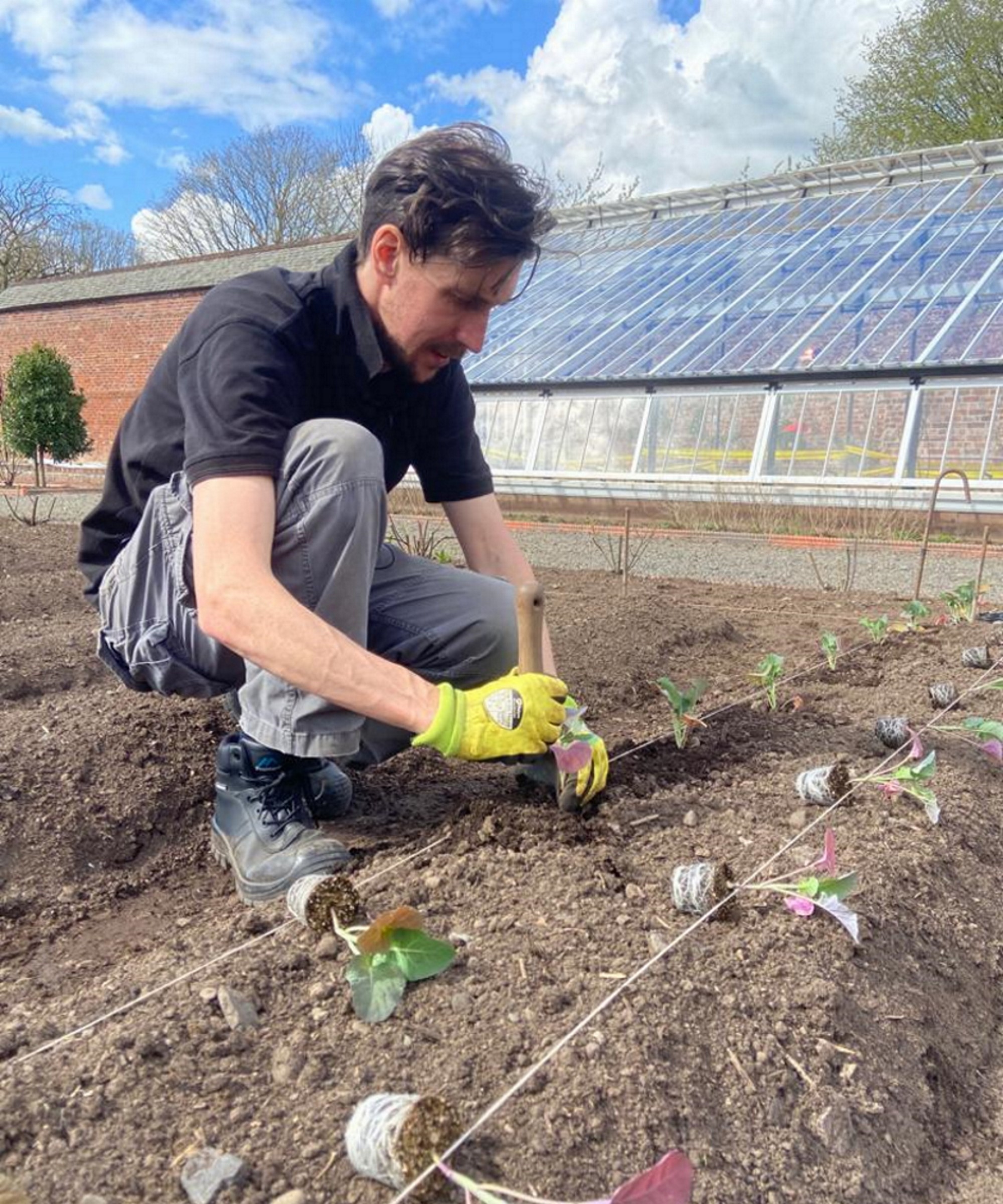
Drew has worked as a writer since 2008 and was also a professional gardener for many years. As a trained horticulturist, he worked in prestigious historic gardens, including Hanbury Hall and the world-famous Hidcote Manor Garden. He also spent time as a specialist kitchen gardener at Soho Farmhouse and Netherby Hall, where he grew vegetables, fruit, herbs, and cut flowers for restaurants. Drew has written for numerous print and online publications and is an allotment holder and garden blogger. He is shortlisted for the Digital Gardening Writer of the Year at the 2025 Garden Media Guild Awards.
